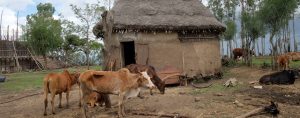Ending global hunger is one the greatest challenges and opportunities of our time and USAID’s Feed the Future program is working to solve it through partnerships and innovation. The Feed the Future Innovation Labs conducted a regional partners’ meeting in Addis Ababa (Ethiopia) on May 20-21, 2019 to raise awareness among researchers and field practitioners about promising Innovations that can address development challenges and build resilient and food secure households.
As the U.S. Government’s global hunger and food security initiative, Feed the Future works to give families and communities some of the world’s poorest countries the freedom and opportunity to lift themselves out of food insecurity and malnutrition. By equipping people with the knowledge and tools they need to feed themselves, it is addressing the root causes of poverty and hunger, helping people end their reliance on aid, and creating important opportunities for a new generation of young people—all while building a more stable world.
IFPRI-ESSP is one of the partners working with the Livestock Systems Innovation Lab (LSIL) in Ethiopia. One of the main topics that ESSP is working on in this project is on understanding the pattern of transformation of Ethiopia’s livestock market systems. According to Bart Minten, Ethiopia has shown a tremendous change in the areas of poverty and stunting reduction, but stunting levels are still high in the country, partly due to monotonous diets. Luckily, there are however signs of increasing diversification in the food basket: the share of cereal expenditures is on the decline and expenditures on high-value and nutritious foods (animal source food, fruits and vegetables) are on the rise. However, part of the increase in expenditures goes towards the increasing prices paid for these latter foods. In order to tackle this problem of high prices of nutritious crops, more attention should be given to these high-value and nutritious crops - through the development and spread of innovations - as to keep their prices low given the beneficial nutritional impacts and the large demand increases that are expected in this area. You can find the more details here.
Please subscribe to receive regular updates on ESSP’s work and its quarterly newsletter.
